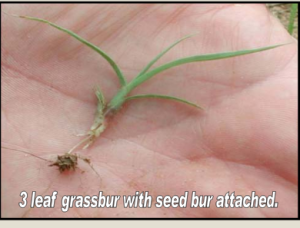By Stephen Janak
County Extension Agent – Ag/NR
Colorado County
Boy, how time flies! I find it hard to believe that it’s already March, and the first day of spring is just over two weeks away. We will soon see warmer temperatures and more sunshine, which in turn raises the soil temperature. This means that it is time for spring gardening!
Lucky for us, Texas A&M University has research-based information on every aspect of gardening, including recommendations for those trying to utilize the organic approach. To access this information on your own, visit the website aggie-horticulture.tamu.edu/vegetable. You will find free information addressing every common question related to gardening in Texas.
The site offers a useful tool to help gardeners select the varieties that are best adapted to Colorado County. Click on the Vegetable Variety Recommendations link, and you can search by county to find a list of varieties for many different species of vegetables. I would take this list along while going around and buying transplants or seeds. Selecting varieties that are recommended for our area is better than selecting based on popularity or availability. Recommended varieties are more tolerant of, or resistant to, common insect pests and diseases, and are also better adapted to the soil conditions and temperatures in our area.
Additionally, the site offers a vegetable problem solver which addresses common problems in cucurbits (cucumbers, squashes, cantaloupes, and pumpkins), tomatoes, and watermelons. This tool will help producers identify the causes of problems, suggest ways to prevent the issue in the future, and offer solutions for the current problem.
I realize that some people may not have access to a computer or the internet, and that is why I am here. If you would like to get a list of the recommended varieties for Colorado County, or have specific questions related to gardening, simply call or stop by the office and I’ll be happy to help you.
This is also the time of year when we start to see germination of grassbur or sandbur seedlings in yards and pastures. Early detection is the key to controlling this annual grass plant with herbicides. I have already received pictures of 1” tall seedlings near Garwood. Identification can be tricky because the young plant looks like any other innocent grass. One easy way to tell it apart from other grasses is to pull the young plants from the soil, trying to pull the root system with it. If you pull a handful of these seedlings, one or two will usually still have last year’s bur hanging on the end of the new roots. This is the easiest way to get a positive ID. As always, for more help, call me at 979-732-2082, email stephen.janak@ag.tamu.edu, or stop by our office. Happy Gardening!
Picture from TAMU Soil and Crop Sciences publication SCS-2009-10. By Dr. Paul Baumann

